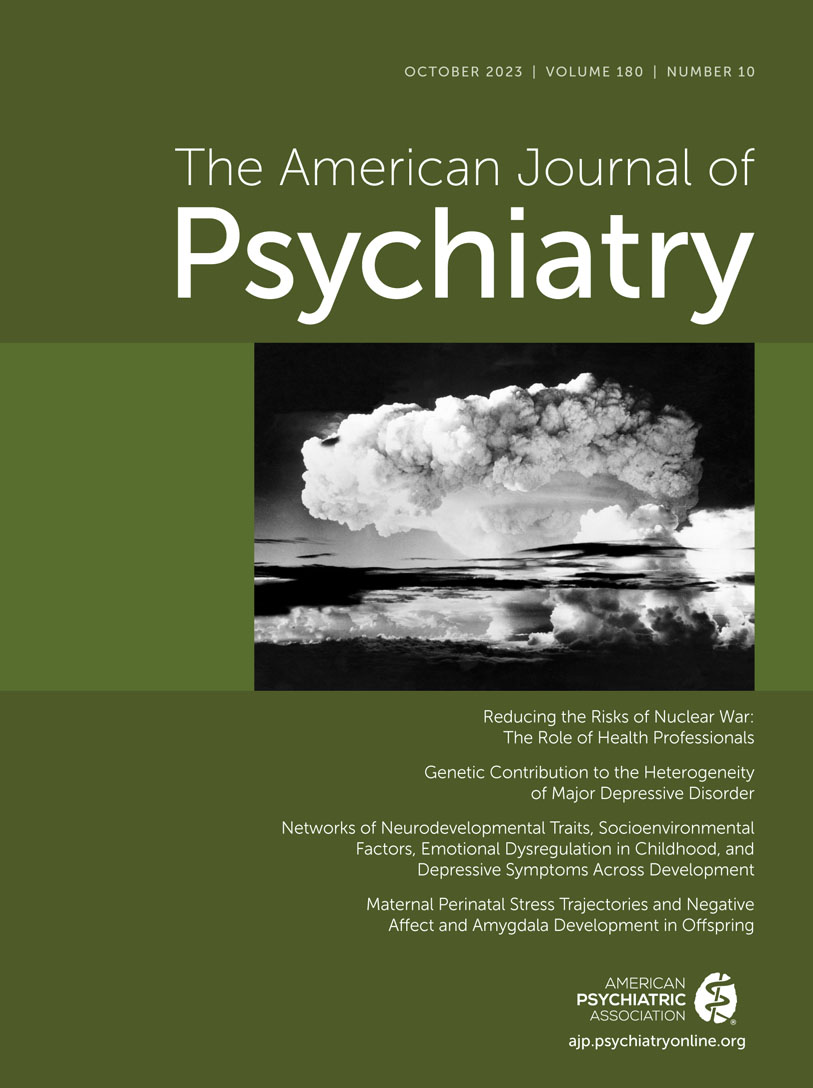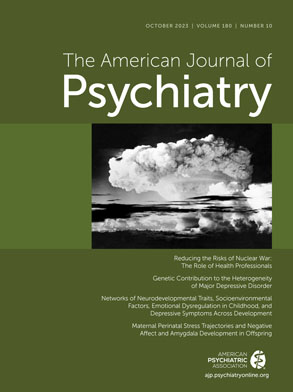Clinicians are familiar with the heterogeneous nature of depression. Two patients rarely share the same symptoms, risk factors, treatments, or outcome. The severity of an episode can vary between 2 weeks of self-resolving symptoms to protracted episodes that threaten life and require compulsory emergency treatment. Appetite and sleep changes also support a diagnosis of depression regardless of whether they are increased or decreased in quantity. It is assumed that the clinical heterogeneity of depression reflects the grouping of individuals with distinct etiologies under the same diagnosis. Some causal mechanisms may also act across current diagnostic categories. Individuals with either depression or schizophrenia may respond to treatments that target psychotic symptoms or depressed mood, respectively. Unfortunately, diagnosis often imperfectly guides individuals to the treatment to which they are most likely to respond.
Surprisingly, given the scale and importance of these issues, the research evidence to measure the degree of causal heterogeneity among depression and its subgroups is relatively sparse. Efforts to more effectively subgroup individuals into diagnostic categories require us to measure the degree of improvement over current diagnostic practice. That is, does membership in the subgroup meaningfully relate to factors that are, or could be, clinically useful, such as causal mechanisms, treatment responsiveness, or prognosis? The article by Nguyen et al. in this issue of the
Journal (
1) makes an important contribution to this effort.
Many medical conditions formerly defined on the basis of clinical symptoms alone have gradually been replaced by disease entities driven by the discovery of characteristic cellular pathologies, infections, or genetic variants. These criteria group individuals into more causally distinct subgroups and lead to the development of more effective mechanistically targeted treatments. Patients with neuropsychiatric disorders have also benefited from these advances, key examples of which are the discovery of syphilis as the causative agent in individuals with “general paresis of the insane,” neuroimaging markers of neurodegenerative disorders, and a growing list of monogenic neurodevelopmental syndromes (
2). Depression has been noticeably absent from the list of diagnoses reformed by the application of diagnostic and laboratory investigations.
Comments on the Study
Nguyen et al. report a Swedish register-based study that used various clinical and psychological features to subdivide individuals with major depressive disorder (MDD) into two groups. Features used for subgroup definition included high versus low disability (based on MDD-associated early retirement), youth versus adult onset, presence or absence of suicidality, and recurrence versus single episode. The authors then assessed the heritability of their subgroups and patterns of genetic correlation between the pairs of subgroups delineated by each clinical/psychological feature and across different types of subgroups. The study used a sibling-based design that compared full and half siblings, who differ in the proportion of shared genetic variation but are assumed to share a common environment.
The study’s first key finding is that individuals who are more disabled by their illness or are affected at a younger age have more heritable subtypes of depression than those who are less disabled or are affected later in life. The second major finding is that across most of the methods used to generate subgroups, the genetic correlation between the two subgroups of depression generated by a given feature was significantly less than 1. This indicates that the overlap in genetic etiologies between subgroups is partial rather than complete, where a genetic correlation of zero represents complete separation. Most of the estimates of genetic correlation were, however, greater than 0.7, and this suggests that the overlapping genetic causes remained substantial. For early/youth onset compared to adult onset, however, the separation was greater, with a genetic correlation of only 0.33, implying greater genetic and therefore etiological separation between these two groups. Older individuals have more opportunities to accumulate environmental risk factors, which provides a potential explanation for the lower heritability of later-onset depression. This rationale should not, however, be accepted too readily. There are complex traits with environmental influences that show increasing heritability with age, for example, general cognitive ability (
3). Alternative methodological, clinical, and mechanistic explanations for the differences in heritability between early and later-onset MDD will need to be systematically considered.
There are some limitations to the sibling design—full siblings and half siblings differ in more ways than in the proportion of shared genetics, potentially affecting heritability estimates. For example, half siblings may have the additional MDD risk factor of a stressful family breakdown, and half siblings in this study did have higher rates of MDD than full siblings (9% vs. 3%). However, the authors compared the results of their Swedish sibling-based study with an analysis in UK Biobank estimating subgroup heritability estimates and genetic correlations based on a very different study design (SNP heritability estimates via genotyping). The two sets of analyses are largely consistent, which gives greater confidence in the findings of both studies.
How Does This Work Change Things?
This study provides important evidence that the clinical heterogeneity of depression is also underpinned by important differences in heritability and genetic correlation reflective of causal heterogeneity. The finding that individuals with greater disability (leading to early retirement) have a more heritable condition mirrors other work by some of the coauthors showing that severe MDD has a higher heritability, closer to estimates for schizophrenia, with which it also has a higher genetic correlation.
Directly translating the study’s findings into clinical practice or research may, however, prove challenging in the short term. Clinically useful subgroups would be ones that lead to clear differences in clinician decision making, such as the provision of different patient information or intervention. We believe that threshold has not yet been reached; arguably, most subgroups have not yet been shown to differ sufficiently in their etiologies or treatments from unstratified major depression. Others may be tempted to suggest that researchers should now focus on the subtypes of depression that have been shown either to have higher heritability or lower genetic correlation with other subtypes. This, too, is challenging to implement, as the separation across subgroups is partial, and subgrouping based on an imperfect criterion now may limit our ability to reveal larger and more actionable subgroupings later. An important consequence of stratification would also be the greater effort needed to identify smaller numbers of eligible individuals for genetic and other studies. The current broadly inclusive approach to genetic association studies of depression has successfully revealed causal variants with risk-conferring effects across studies using different approaches to case definition (
4). Furthermore, these studies are also beginning to identify clear evidence of potentially modifiable lifestyle factors (
5,
6) and, in time, will better represent diverse populations that will also gain from the growing mechanistic insights and genetically informed treatment target identification.
What Is the Future?
The demonstration that depression is measurably etiologically heterogeneous is a very clear contribution from the present work. It helpfully signposts methods that could be applied across many axes of stratification, whether they are based on risk exposures, clinical symptoms, treatment response, or outcome.
Medical research in multiple fields outside of psychiatry has shown us that disorders separated on the basis of causal risk factors or mechanisms tend to provide the most useful subtypes for both research and clinical care, as more effective treatments are generally those that more directly address identified disease mechanisms. There are many approaches that could usefully be employed to stratify individuals with depression into more etiologically discrete causes based on genetics, other forms of molecular phenotyping, brain imaging or physiology, or presence of specific environmental risk factors, such as recent infection. Examples of these approaches include subtyping based on the presence of genetic risk factors for other disorders, such as MDD with high genetic risk for schizophrenia (
7). Molecular approaches may also be able to infer or indirectly measure differences in the presence of, or abnormal response to, environmental risk factors if these act via the modification or expression of genes and key proteins. As the genomic prediction of key biological processes and diseases advances, it will become increasingly useful to evaluate differences in heritability and genetic correlation across these subgroups. The ultimate test will be whether the subgroups identified provide useful information to patients or clinicians that leads to more effective treatment and better outcomes.

